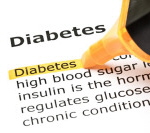
The following chart is intended only as a guideline of risk factors to help you decide if you (or your child) should be tested for insulin resistance. Â If you have any signs or symptoms of insulin resistance be sure to tell your doctor.
Pre-diabetes is diagnosed when blood sugars are mildly elevated but not high enough to classify a person as being diabetic. Â But insulin resistance can still be present even when blood sugars are still normal. Â People with untreated insulin resistance are at significant risk for pre-diabetes and type 2 diabetes.
Lab tests that only check blood glucose levels are not sufficient to rule out insulin resistance. It is possible to have normal blood glucose levels but abnormally high insulin levels (insulin resistance).
People Who Should be Tested for Insulin Resistance
(in addition to being tested for pre-diabetes)
Age/Gender |
Who to Test |
| All Ages/ Genders | Anyone who has been diagnosed with Hashimoto’s Thyroiditis, Metabolic Syndrome X, high blood pressure (if they are also overweight), or high triglycerides and low HDL cholesterol (even if weight is normal).
Overweight people of any age/gender who also have any of the following: acne (severe acne in teens or moderate-severe acne in adults); skin tags; acanthosis nigricans; a family history of pre-diabetes, Metabolic Syndrome X (Insulin Resistance Syndrome), Polycystic Ovarian Syndrome (PCOS), or type 2 diabetes. Note: PCOS only affects women, however the gene that leads to a predisposition in women for PCOS can also be transmitted to men. Overweight men who have a mother or sister with PCOS have an increased risk for insulin resistance, Metabolic Syndrome X, pre-diabetes, and type 2 diabetes. |
|
Children
|
Children who are obese or gain weight easily, especially girls if they show signs of early onset of puberty (before age 10), and overweight boys who are slow to show signs of puberty.
Obese children with a family history or type 2 diabetes or pre-diabetes. |
|
Teens – Girls
|
Girls who have abnormal periods (heavy, absent, or irregular), especially if they are hirsute (have excessive facial or body hair), severe acne, skin tags, acanthosis nigricans, or have been diagnosed with Polycystic Ovarian Syndrome (PCOS), or Cushing’s Syndrome. |
|
Teens – All
|
Any obese teen, especially if there is a family history of PCOS, Metabolic Syndrome X, pre-diabetes, or type 2 diabetes.
Teens that suddenly begin to gain weight or who are overweight and have moderate-severe acne. |
|
Men
|
Overweight men, especially with a family history of metabolic problems, carry excess weight around the abdomen, are experiencing erectile dysfunction, have high blood pressure, high triglycerides, or other health problems. |
|
Women
|
Women who have been diagnosed with PCOS, Cushing’s, thyroid problems, are overweight and have undiagnosed infertility or abnormal periods. Â Women who are overweight and excessively hairy (hirsute) or begin losing scalp hair (or have bald spots). |
|
All Adults Over 40+
|
Aging increases the risk of becoming insulin resistant, and developing pre-diabetes, Metabolic Syndrome X, and type 2 diabetes.
If you are overweight, or there is a family history or metabolic disease, you should get checked for insulin resistance and pre-diabetes not later than age 40 (the American Diabetes Association recommends all people age 45 and older, regardless of weight and family history be screened for pre-diabetes.) If you are otherwise healthy, your doctor may decide you do not need to be screened for insulin resistance or pre-diabetes until you are older -Â but the older you get, the more your risks for metabolic problems increase. |
This chart is copyright protected, however, you may use this chart for non-commercial purposes if you give credit as follows:
Source: Lahle Wolfe. Pre-diabetes.com. “Who should be tested for insulin resistance?” Updated:Â February 2, 2012.


